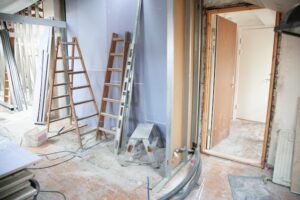
As our loved ones age, it becomes increasingly important to ensure that their living environment is safe, comfortable, and accessible. This article will explore various ways to make a home more elderly-friendly, focusing on improvements that can enhance both the physical and emotional well-being of seniors. By implementing some simple adjustments, you can help your elderly family members maintain their independence and quality of life.
Install Grab Bars and Handrails
One of the most effective ways to improve accessibility in a home is by installing grab bars and handrails in key areas such as bathrooms, hallways, and staircases. These sturdy supports provide added stability for seniors as they navigate their living space, reducing the risk of falls and injuries. Make sure to install them securely using professional installation services to ensure maximum safety.
Create a Wheelchair-Friendly Layout
If your elderly loved one uses a wheelchair or walker, it’s important to design the layout of their home with mobility in mind. This may involve widening doorways, removing tripping hazards such as rugs or clutter, and rearranging furniture to create clear pathways. Consider investing in ramps for entryways or staircases to make all areas of the home easily accessible.
Install Chair Lifts
For homes with multiple levels, installing a chair lift can be an invaluable addition to improving accessibility for seniors. Chair lifts offer a safe and convenient way for elderly individuals to navigate stairs without the physical strain or risk of falling. These motorized seats are attached to the staircase and can be operated with minimal effort, typically through simple controls.
Modern chair lifts come with various features, including safety belts, swivel seats for easy entry and exit, and backup batteries to operate during power outages. A company, one like 4 U Mobility Solutions, can professionally install a chair lift to help your elderly loved ones maintain independence and confidently move between different levels of their home.
Improve Lighting and Visibility
Poor lighting can pose a significant safety risk for seniors with decreased vision or mobility issues. To enhance visibility throughout the home, consider installing brighter light fixtures, adding motion-sensor lights in hallways or bathrooms, and using lamps with adjustable settings for reading or other activities. Natural light is also beneficial for mood and overall well-being, so keep windows unobstructed whenever possible.
Upgrade Bathroom Fixtures
The bathroom can be a particularly challenging area for seniors due to slippery surfaces and limited maneuverability. To make this space more elderly-friendly, consider installing a raised toilet seat with armrests, non-slip mats on the floor, and a handheld showerhead for added convenience. These simple upgrades can greatly improve comfort and safety during daily hygiene routines.
Incorporate Comfortable Furnishings
In addition to making structural adjustments for accessibility, it’s important to prioritize comfort when selecting furnishings for an elderly-friendly home. Opt for supportive chairs with armrests that are easy to get in and out of, soft bedding materials that are gentle on aging joints, and ample seating options throughout the house for resting or socializing. Accessible storage solutions such as lower cabinets or pull-out drawers can also make daily tasks easier for seniors.
Creating an elderly-friendly home involves thoughtful planning and attention to detail to ensure that your loved ones can age comfortably and safely in their living space. By incorporating grab bars, wheelchair-friendly layouts, improved lighting, upgraded bathroom fixtures, and comfortable furnishings into the home environment, you can significantly enhance accessibility and comfort for seniors. Remember that small changes can make a big difference in promoting independence and well-being as individuals age gracefully in place.


